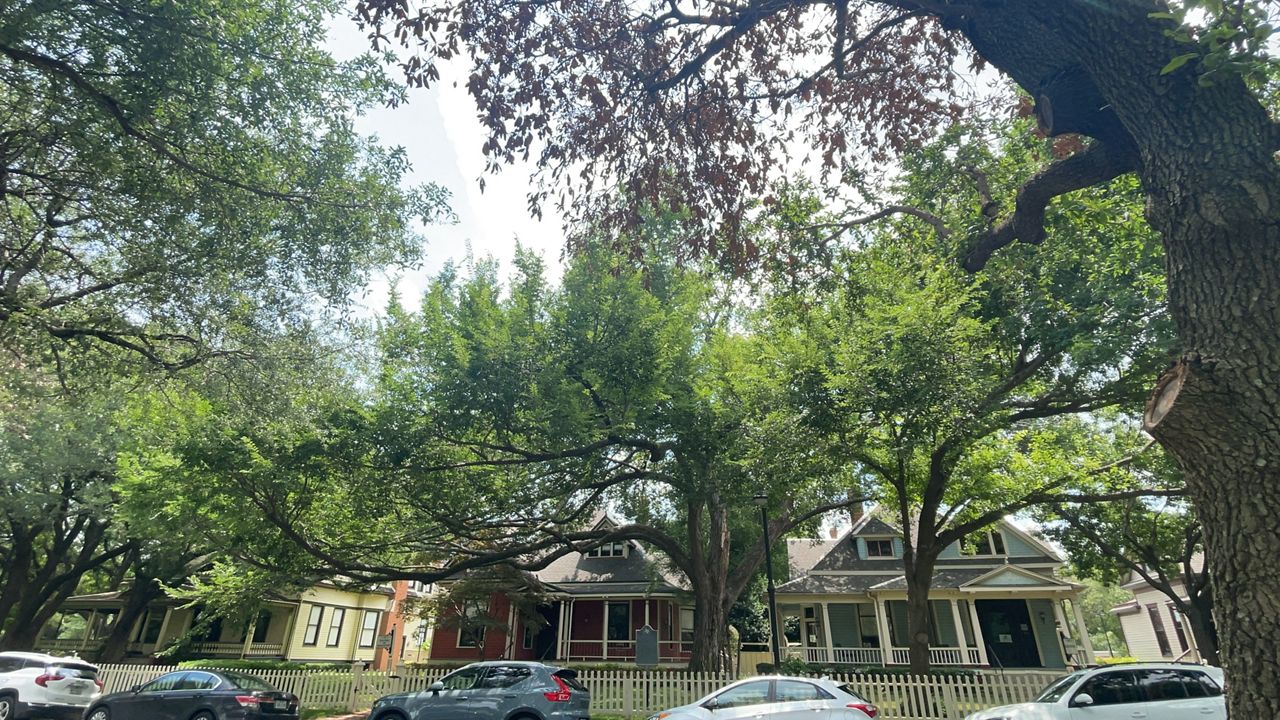DALLAS — The 14.7 million trees in Dallas are a natural resource valued at over $9 billion in benefits to the ecosystem and replacement cost. The City of Dallas is bringing trees to the forefront as an environmental priority by approving the first ever Urban Forest Master Plan.
The plan is a framework for managing trees to help guide reforestation efforts in the decades to come. The City of Dallas says it is committed to growing the tree canopy, which is currently unevenly distributed across the city. While the tree canopy cover of 32% is relatively high for a city as large as Dallas, the goal outlined in the Urban Forest Master Plan and the Dallas Comprehensive Environmental and Climate Action Plan (CECAP) is to reach 37% cover by 2040.
"With urban forestry, getting a balance between the green infrastructure and the gray infrastructure is really really important for human health and quality of life,” said Texas Trees Foundation President and CEO Janette Monear.
Some of the recommendations outlined in the UFMP are competing an inventory of the trees Dallas already has, and the conditions those trees are currently in, centralizing the management of the urban forestry programs and activities, ensuring Dallas regulations will support tree canopy growth and protection, implementing a strategy to maximize investment and resources to meet Dallas’ desired level of service for urban forests programs and management, and creating a plan to strategically plant and care for trees that will ensure equitable access to the benefits trees provide.
"It’s a symbiotic relationship between trees and people. We need to have trees. I say it a lot, the quality of life is dependent upon the benefits the trees provide,” Monear said. "The trees have a positive impact on our human health. They're sequestering CO2, they're sequestering particulates that are in the air, they're creating oxygen that we breathe. So the more trees, the more oxygen you're going to have. The more oxygen you have in your breathing, the easier it is to breathe and to think.”
Trees also make cities more livable, according to the UFMP. They decrease summer temperatures, provide stormwater mitigation, heat reduction, air quality improvement and improved health, wellness, and quality of life for Dallas residents.
The North Texas tree population was already dealt a blow from the 2019 tornado. That damaged more than 3,500 trees. The city currently does not have a comprehensive urban forestry storm response plan in place. According to the UFMP, “[The] plan would have helped to better coordinate storm response activities across City departments, including, tree condition and risk assessments, managing recommended removals, pruning damaged trees, and handling the vast amount of woody debris created by the storm event.” Adding an unprecedented winter storm in February only contributed to the tree deficit.

If Dallas wants to increase the tree canopy from 32% to 37% by 2040, that’ll require planting 350,000 trees. And that’s exactly what will happen, says Environment and Sustainability Chair and City Councilmember for District 6 Omar Narvaez.
“That's one of my goals over the next, you know, two to four years if I'm still on the City Council is to definitely make sure that we continue this implementation and pushing for having enough trees and green spaces across the entire city of Dallas for everyone,” Narvaez said. "It might sound a little Pollyanna but trees are our friends and we need to be friendly back to trees."
Monear said the City of Dallas is one of the hottest cities in the country because of the urban heat island effect. And that heatwave is predicted to continue, with 30 to 60 more days per year of 100 degree heat by 2050. Trees provide much needed shade and evapotransporate, bringing down ambient air temperatures and that shade can translate to a reduced monthly bill for homeowners.
"That brings down about 20% of your utility bill monthly, and that's a big deal. And when you start bringing down our energy costs, and the amount of energy that it takes especially as a really hot data, generate any kind of air conditioning, and the overload that our utilities can get from that, it’s really important,” Monear said.
And with record demand on the statewide power grid this summer, a more shaded Dallas is a welcome future.



